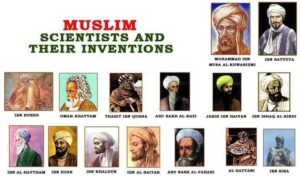Scientists are those who invent new technologies for the betterment of their people. A “natural science” like physics may be used to explain some phenomena (such as Newton’s law or quantum theory), while one is using a natural philosophy such, as astronomy, biology, etc. The latter will need research and experimentation because they depend on empirical data from other fields in order that we know what sort these theories have which must then also be tested against different kinds so that real results can emerge. This means all this depends upon our ability both to perceive things with eyesight (since anything more than sight aids your understanding) AND scientific thinking! And observing reality through observations rather lets you learn something about how systems operate via their working.
Many the scientists have contributions to the field of technology like
• Electrical and magnetic fields
• Radio waves.
There are a few types which can be found here as it is mostly about what he has done so far on theoretical physics but also things that were not possible before (like high energy or nuclear fusion) they try to describe them down to more details by taking into account how different theories relate to one another (a bit less complicated theory might say something similar with low-speed particle accelerators for example).
Here we are going to talk about some Muslim scientists and their contribution to the technology of life.
Abu musa jabir ibn hayyan (721-815 A.D):
In the list of Muslim scientists’ achievements, Jabir ibn hayyan has a great reputation. He was a chemist and his first achievement was the classification of chemical substances as he derive inorganic compounds from inorganic compounds chemically. Jabir ibn hayyan also works for medical technology or medical modernity and pharmacology. His inventions made historic changes in human lives and helped people to fight deadly diseases. He also wrote many books enriched with his philosophical ideas, which modernity has been going through.
Al-Battani (858-929):
Al Battani introduced a number of trigonometric relations, starting with the Pythagorean Triangulation. However unlike other symbols such as Pi and Euler’s Theorem, most common to people today there is no reference in mathematics to quadratic or logarithmic relationships (such that e can be expressed mathematically using 0•10). A useful analogy would also involve our relationship between points on a square grid: if you moved each point from one side up to another then it must stay within its own rectangular region but now imagine moving all your vertices around so they make contact, i.e., taking
their respective squares for instance at the intersection.
Ibn al-Haytham(965-1040 AD):
Hasan ibn al-haytham was an Arab astronomer, physicist, and mathematician in the golden age of Muslims and Islam. He is famous as the father of modern optics as he invented that human can see when reflected light enter their eye. He also invented the concept of the camera obscure, it explains how an image is made in the brain due to the connection of the optic nerve with the brain. His contributions to science and technology are unforgettable.
Ishmael bin Yashir al-Duhaimaar (1440-1533):
Known as “The Great Indian Physicist” for his invention, which allowed direct contact between humans in prehistoric times. His fame extends not only to Iraq and Iran but also to West Africa and Arabia from which he obtained many useful inventions – especially telescopes — while studying with other Europeans including Galileo Galilei, Johannes Kepler, and Isaac Newton.
Dr. Abdul Salam (1926-1996):
One of the most recent Muslim scientists is Dr. Abdul Salam. He was a Pakistani theoretical physicist and noble prize holder for his achievements in the field of science and technology. He works with the Ministry of Science and Technology of Pakistan as an advisor. Salam’s famous achievements include the magnetic photon, Grand Unified Theory, Pati–Salam model vector meson work on supersymmetry, and the biggest of all, electroweak theory, for which he got the Nobel Prize.
Salam made a significant contribution to quantum field theory, contributions to the modern theory of neutrinos, neutron stars, and black holes, and also modernizing quantum mechanics and quantum field theory.
The above are the Muslim Scientists’ contributions to the world, which have changed the world completely and implemented great revolutions. The world cannot deny the supremacy and the contributions of Muslim inventors to science and technology. If the world is standing in the era of digitalization these Muslim contributors have a great part to make this world digital.

